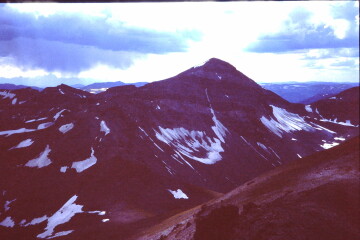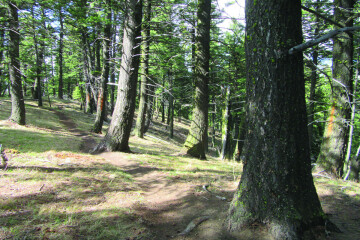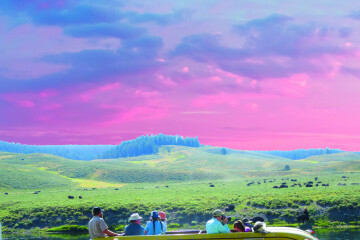The ICE is Calling
As the sun slips lower with each passing day, we Montanans enter the Season of Ice. It starts as a thin skin on puddles and frost on the roof. You have to start scraping your windshield every morning. Before long, the dropping temperature brings frozen ponds and lakes, as the aquatic world receives its translucent roof for the winter.
Ice skating is an ancient activity that offers another way to get out and about in the long, cold Montana winter. Attach thin blades to your feet and, with a little technique, you can glide across what was open water a few weeks ago, and stay dry. Your best bet are comfortable, long-bladed skates, like hockey skates. For longer outings I use “clip-on” skate blades that attached to my Nordic ski boots. These blades are made by Isvidda or Zandstra. They come with Nordic ski bindings attached. With these, you can wear your ski boots to walk to the lake, then clip on the blades and go.
Skating is a fun family activity, is inexpensive, and is plenty active. It’s also extremely satisfying, and even relaxing, to glide across a perfectly level surface, out in the open air, with smiling friends nearby, enjoying the ever-changing look and texture of the ice.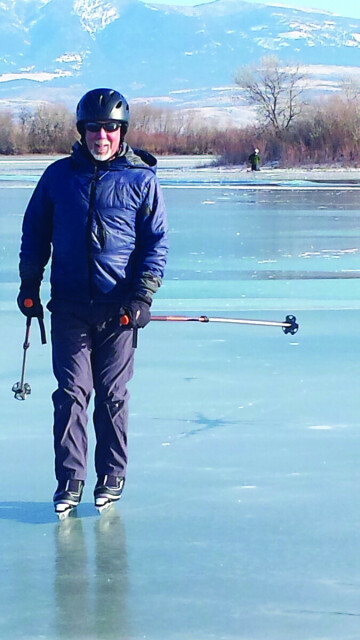
The smoothest ice is known as “black ice.” Black ice is actually clear ice that looks dark. It usually does not last long, since the ice turns opaque as it ages, snow falls on it, and it freezes and thaws. Black ice is kind of spooky to skate on, since you can see through it and it’s usually not very thick. If the water is shallow – and this is safer if you fall through – you can see amazing patterns of bubbles in the ice, and rocks, weeds, and logs, and possibly even fish on the bottom.
Wild ice has a lot of personality. It is beautiful and dynamic, and it talks. The ice is constantly expanding and contracting, making booms, chirps, squeaks, cracks grumbles, and pops, sometimes sounding like whales singing.
With ponds and lakes scattered across Montana, there is plenty of ice to go around. Late fall and early winter are the best time to find “wild ice” – naturally formed ice rather than made-made rinks. If you are motivated and intrepid, ice skating may start as early as October. Get out there before much snow falls on the ice and makes skating impossible without a lot of shoveling and pushing. If you are looking for the wild ice that forms naturally on ponds and lakes, you can find it right in Bozeman, forming on ponds such as Glen Lake, Cattail Pond, the Regional Park and Hanley Pond.
If you want a tamer, more social experience, Bozeman has some fine ice skating facilities. Weather permitting, the city floods public spaces and makes rinks in Beall Park, Southside Park, and Bogert Park. And, of course, there are the excellent Haynes Pavilion and Gallatin Ice indoor rinks at the Fairgrounds.
Once in a while, we in Montana are lucky enough to get a good solid early freeze with no snow. This happened in 2021 and resulted in epic black ice conditions on lakes such as Canyon Ferry, Three Forks Ponds and Quake Lake. I found amazing skating at that time on Ennis Lake. Other options for early ice include Lake Helena and Dailey Lake. Hyalite Reservoir takes longer to freeze but can be a worthy outing.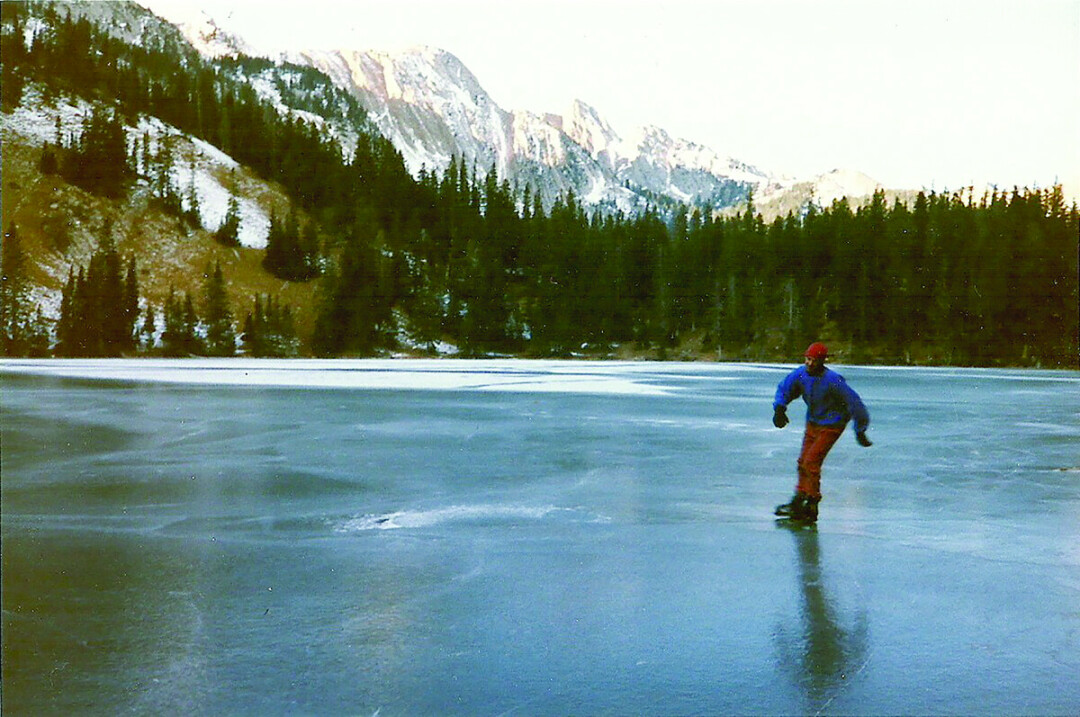
I have skated on some high country lakes in good November conditions – Lava Lake and Fairy Lake provided memorable experiences. I recall the ice on Lava Lake booming, cracking, and making some very trippy sounds. This is all part of the fun. With alpine lakes scattered all over the mountains, it’s just a matter of how hard you are willing to work to get some ice.
There is a hard core species of ice skater, some of whom I know personally, who make it an annual challenge to skate on wild ice as early as possible. As I write this on November 1st, some of these folks have already been venturing onto thin ice, determined to get winter started early. On October 29th, my friend and his pals skated on 1 ¾ inch to 2 ½ inches of ice near Canyon Ferry Reservoir. This is some fragile ice, and you have to be determined (and a bit crazy) to venture onto it. My friend told me they sometimes skate with life jackets on, or even in dry suits! This level of skating is for experts only. The MT icebuds Facebook group is a great place to check out images and videos from recent skating expeditions on wild ice.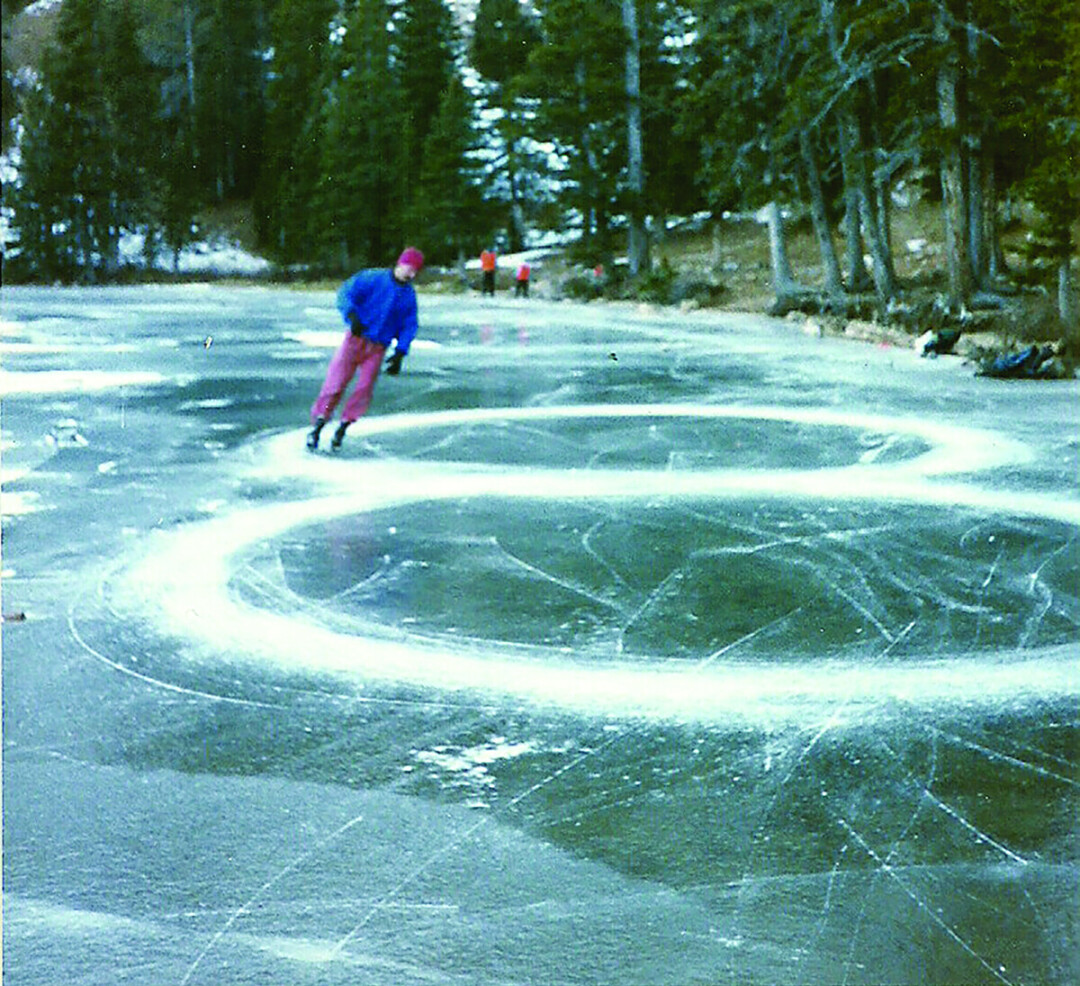
Safety First
Wait a bit and there will be plenty of more reliable ice. Four inches is considered by experts to be the minimum for safe skating, while five to six inches is generally safe. If there are ice fishermen around, ask them how thick the ice is. Or consider bringing an auger to drill your own hole. Use your judgement and do not trust anyone else’s advice on ice unless you are sure they know what they are doing. Falling through ice is serious business, and rescue may be very difficult.
Skating wild ice should always be done with at least one other person. Carry gear for self-rescue and to rescue others. This includes a long rope and a pair of retractable “ice claws” you can carry around your neck to pull yourself out of a hole in the ice. Wearing a helmet is a great idea in case of a fall and head bump. Carry spare clothing, or have some nearby. Have a thermos with a hot drink in your pack. Bring some folding chairs to set on the ice edge for resting and changing shoes.
If you are at all unsure about the safety of the ice, stay off. Ice conditions are changeable, and thickness can vary. Watch for flooding on ice, which can indicate a hole. Beware of cracks that can catch your skate blades. I sometimes use ski poles to skate with – they provide stability and help me push off, and I can test the ice with them. Use collapsible ones so you can stow them in your pack.
The frozen world awaits your skates. Go forth and glide.

